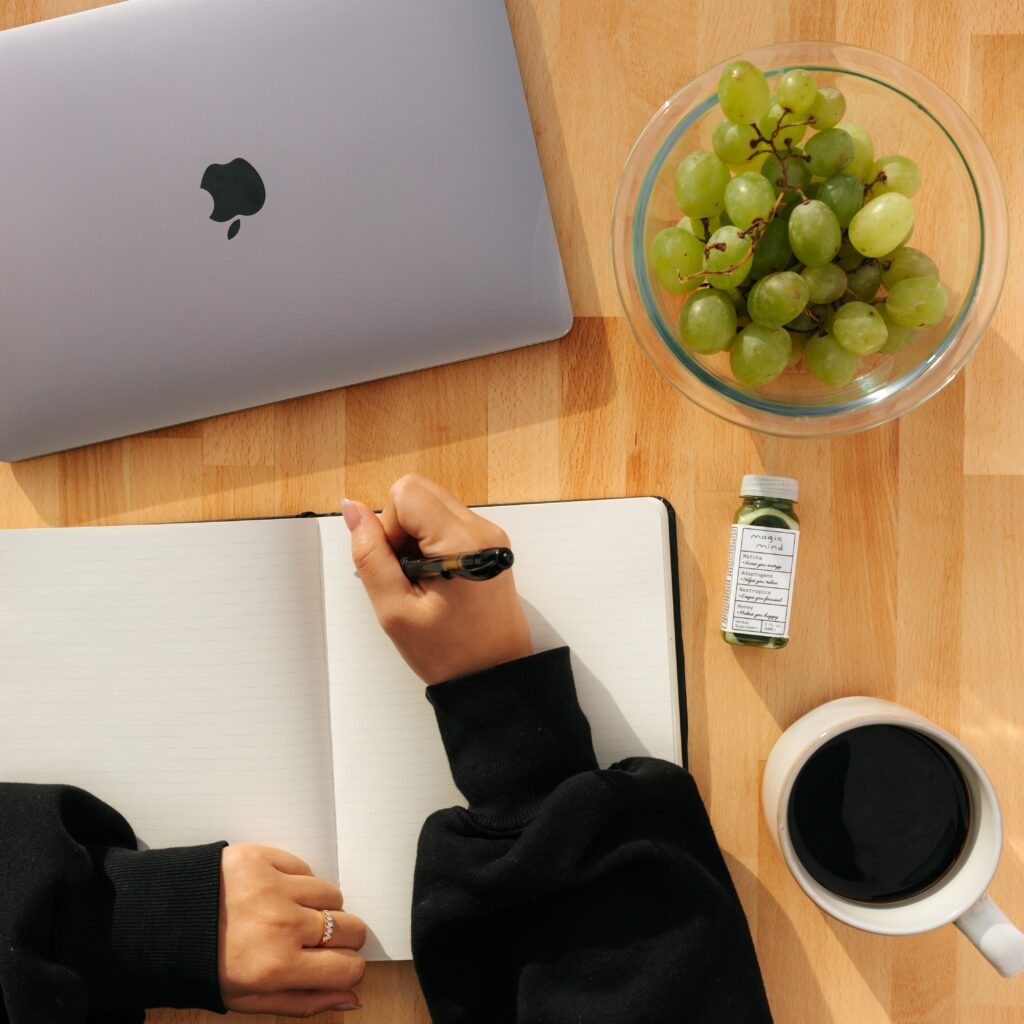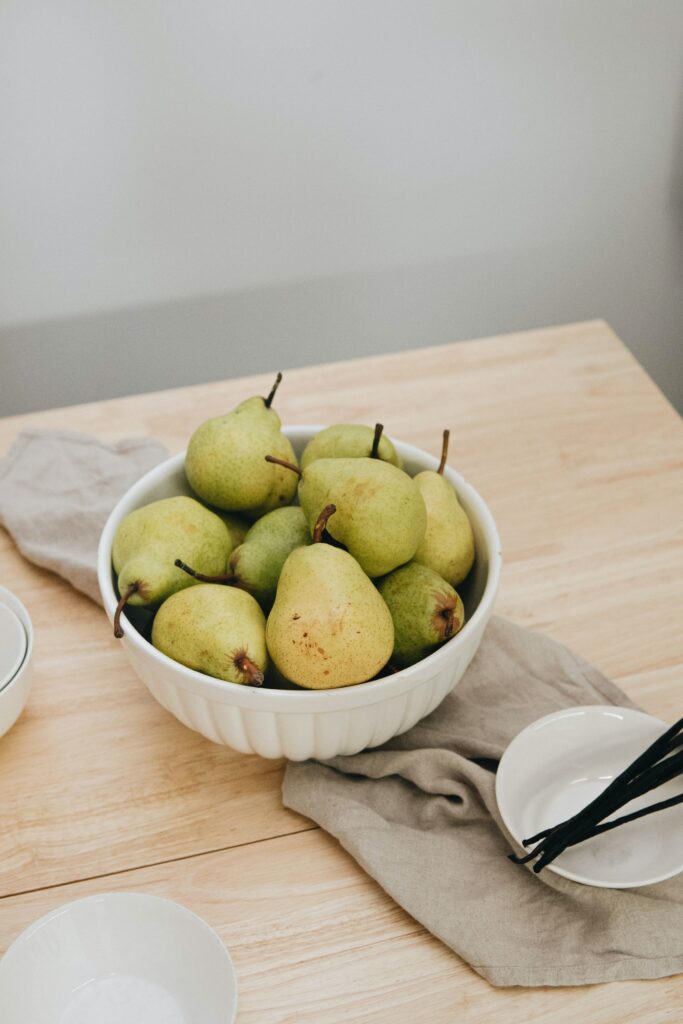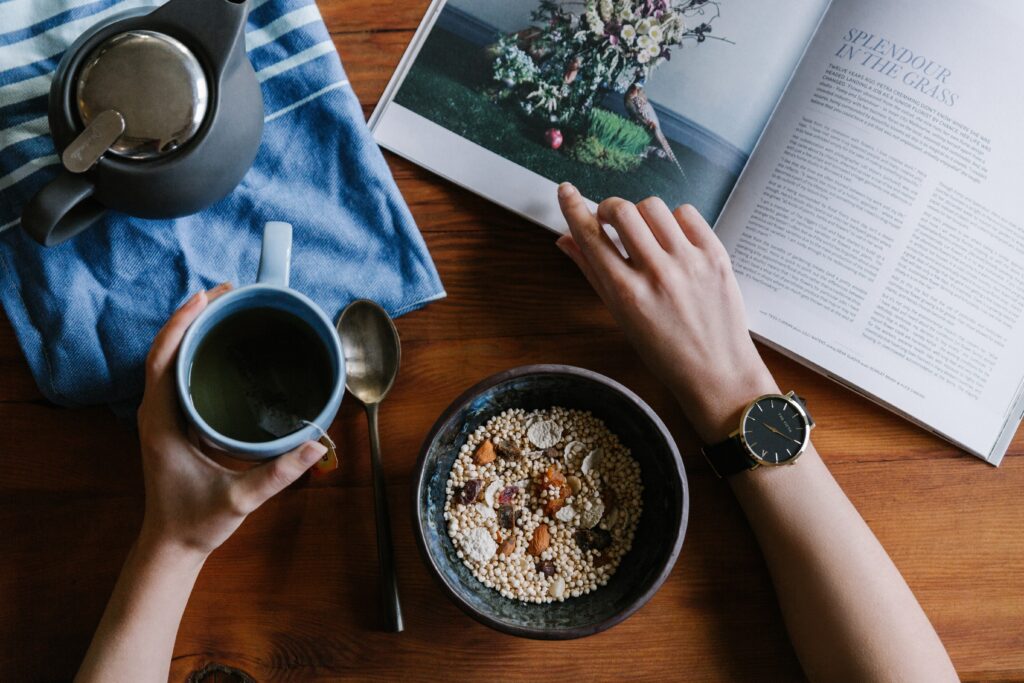With holiday travels under way, let’s chat about blood sugar balance—on the go. After all, it can be difficult to maintain a consistent routine (and eat nourishing meals!) when you’re away from home. More often than not, it’s easy to be derailed by circumstances: delayed flights, eating out, lack of routine, etc. Fortunately, you can absolutely keep blood glucose balanced as you navigate the holiday season. With that in mind, I’m sharing several simple hacks to keep your blood sugar stable while traveling. Thanks to planning and preparation, you can say bon voyage to sugar spikes and crashes on the road.

the Power of balanced blood sugar
Want to improve all areas of your well-being—but aren’t sure where to start? Good news: there’s no need to diet, rely on multiple cups of coffee, or clock hours at the gym. The secret lies in blood sugar balance. Rest assured, living a healthy, energizing life (both at home and on the road!) isn’t nearly as complex or nuanced as we’re led to believe. You don’t need to suppress your hunger, forego the foods you love, or skip dessert. None of these things are enjoyable or sustainable—especially when you’re traveling. Instead, you can utilize a few practical nutrition tools to wake up rested, motivated, and ready to take on the day. And it’s all possible through the power of stable blood sugar.
Most of us have unstable blood sugar
Blood sugar issues impact more than 88% of Americans. Yes, 88%. Unfortunately, most of us are living our lives with sugar spikes and crashes—all day. Eventually, these sugar spikes and crashes eventually become the underlying factor in countless chronic conditions: diabetes, inflammation, and hormonal imbalances. Luckily, not all hope is lost. In fact, you can begin to improve your blood sugar (and thus, your focus, sleep, energy, and mood) in just one day.

What is blood sugar?
Let’s back up. Blood sugar—also known as blood glucose—is the amount of sugar in your blood at any given time. It’s produced when we break down food. Specifically, starchy and sugary carbohydrates. Be it a piece of fruit, a can of soda, or a sweet potato, carbs are quickly absorbed into our bloodstream. In other words, our bodies break down most carbohydrates into glucose. With the help of a hormone called insulin, glucose travels into the cells of the body where it can be used for energy. However, when we eat too many starchy and sugary foods, sugar builds up in the blood and isn’t shuttled where it needs to go: our cells.
Why is stable blood sugar important?
So, why is stable blood sugar the goal? Because blood sugar is our master controller. It dictates everything from hunger and cravings to energy and sleep. We feel our best when our blood sugar is balanced—not too high or not too low. This helps keep our brain functioning optimally, energy levels stable, and mood balanced. However, when it’s out of whack, blood sugar can lead to increased sugar cravings, irritability, poor sleep, brain fog, anxiety, weight gain, and in the longer term, conditions like diabetes and PCOS. All of that said, balancing blood sugar isn’t just important for those with underlying health conditions, it’s key for everyone—kids included!

How do I know if my blood sugar is balanced?
For access to immediate, round-the-clock data, consider wearing a continuous glucose monitor (which gives you direct insight into your blood glucose levels!). Otherwise, begin by tapping into your body’s feedback. Has it been hours since you’ve eaten and do you feel hangry or shaky? These are signs of low blood sugar. Do you experience intense sugar cravings or mood fluctuations shortly after eating? These are signs of high blood sugar. Generally speaking, symptoms like headaches, fatigue, trouble concentrating, and weight gain can be tied back to blood sugar instability.
What are normal blood sugar levels?
If you want your body to function properly, your brain needs the right amount of glucose. As mentioned, glucose = energy. In other words, it’s essential to maintain steady energy to best support your brain! And steady energy comes from a normal blood sugar range. But—what is a normal blood sugar range? Most experts agree that it’s between 70 mg/dL-140 mg/dL. Anything above 140 mg/dl is considered pre-diabetic. Again, wearing a continuous glucose monitor will give you these insights!

8 WAys to keep blood sugar stable while traveling
For many of us, the holidays entail long hours in a vehicle (and if we’re lucky, we wind up in a warm, relaxing place). At any rate, this time of year is one of celebration. But it can also bring its fair share of travel-related—and family-related—challenges. Keeping your well-being intact can feel like an uphill climb between unpredictable food options, an abundance of sugar, and disrupted routines.
1. plan head
Before you set off on your trip, plan ahead. This includes packing healthy snacks, bringing electrolyte packets for your water bottle, any necessary medications, and a sleep mask / earplugs. It’s also helpful to research restaurants and food options at your destination!
2. Pack snacks
Bring nourishing snacks that are easy to carry with you—nuts, seeds, or high-fiber crackers. You can also bring along chia seeds and protein powder (to add to oatmeal).Typically, it’s easy to find carb-rich snacks at the airport and while traveling (apples, chips, etc.), so focus on packing protein and fat-forward snacks. A few of my favorites: nut butter packets, pistachios, keto granola, roasted chickpeas, low glycemic protein bars, and no-sugar-added jerky.
3. focus on protein
When eating out, aim for dishes that are high in protein. Examples include grilled or baked meats, fish, and poultry, as well as eggs, lentils, and tofu. When it comes to breakfast, focus on protein. Starting your morning this way can significantly help your blood sugar—all day long. These are popular breakfasts that spike blood sugar, whereas poached eggs, turkey sausage, or tofu scramble are great options. Opt to split dishes like waffles or pancakes with your fellow travelers! And if you stop by a smoothie shop, ask for an extra scoop of protein powder. It’s also best to swap higher-sugar fruits (like bananas) for lower glycemic options, like raspberries and blueberries.
4. Start with veggies
Fiber-rich vegetables, like leafy greens, collard greens, and broccoli, are fabulous for blood sugar management. If you’re at a pizza restaurant, start with caprese or a simple salad with olive oil and vinegar. Skip the salads with dried fruit. There’s no need to say no to the bread basket but enjoy your bread (with butter or olive oil) after you’ve had a leafy green salad or protein-rich appetizer. If your table is sharing a basket of fries, ask for your burger without the bun and enjoy the fries after you’ve had most of your burger. That way, your body digests the protein—which has minimal impact on blood sugar—before the fries, which will naturally elevate glucose.
5. Be weary of hidden forms of sugar
Along with packing snacks, bring your own individual sweetener packets—like stevia or monk fruit, to add to your coffee or iced tea. Stevia and monk fruit are both very blood sugar-friendly. Furthermore, be aware of hidden sources of sugar in sauces and dressings. Simply ask for these to be served on the side. This goes without saying, but when ordering drinks, avoid sugary beverages such as soda, sweetened teas, and juices. Instead, opt for water, unsweetened tea, or sparkling water.
6. Move your body
Try to stay as active as possible! Take advantage of opportunities to walk or bike instead of driving, and consider incorporating some exercise into your daily routine. Even a 10-15 minute bodyweight exercise routine in your hotel room will help soak up the excess glucose in your blood and stabilize blood sugar. In other words, this doesn’t mean you need to hit the gym every day—even a short walk can help. Additionally, many destinations offer opportunities for outdoor activities (hiking, biking, swimming, etc.).
7. Stay hydrated
Staying hydrated is crucial for blood sugar balance, so be sure to drink plenty of water throughout the day. Dehydration can cause blood sugar to rise, so it’s important to drink water regularly. Don’t forget your reusable water bottle and no-sugar-added electrolytes.
8. Get quality sleep
One of the key components to restful sleep? Balanced blood sugar. When blood sugar is managed throughout the day, you have a higher chance of getting restorative sleep. However, even partial sleep deprivation increases insulin resistance. In turn, this can increase blood sugar levels. The main takeaway is: balanced blood sugar leads to restful sleep, and restful sleep leads to better-managed blood sugar. It’s a two-way street. Don’t forget to pack your sleep mask and a travel-friendly white noise machine.

Stick with the plan, but go with the flow
Traveling is exhilarating and wonderful, but it can also be stressful, challenging, and exhausting. Especially during the holidays. That said, if you aim to keep your blood sugar balanced, you’ll be that much more equipped to handle any obstacles (and family dynamics) that come your way. The goal is to enjoy your experience to the fullest, but that requires planning ahead, prioritizing protein-forward meals, getting quality sleep, and exercising regularly. Of course, relaxing, unwinding, and being spontaneous are equally important, too! It’s all about sticking with the plan but going with the flow.
Images courtesy of Unsplash.
This article contains affiliate links. Thank you for supporting Wellness with Edie!
This article is for informational purposes only. It is not, nor is it intended to be, a substitute for professional medical advice, diagnosis, or treatment and we recommend that you always consult with your healthcare provider.



Leave a Reply